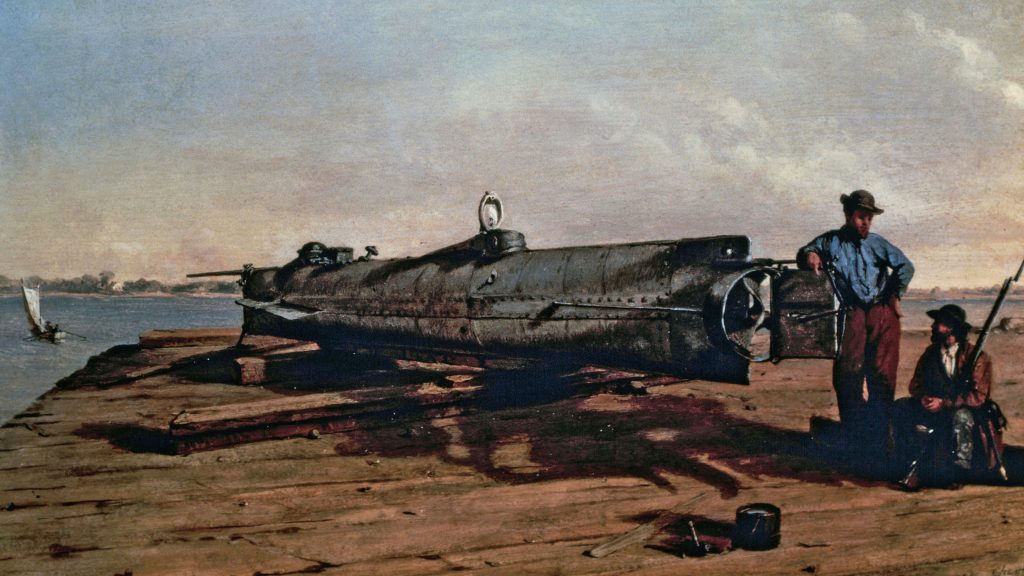

The Hopkinson scaling equations for peak pressure and time constant for underwater blast are shown as Eqs ( 1) & ( 2). However, it is more informative and convenient to describe the output of the charge via the equations provided by Hopkinson scaling, also referred to as the principle of similitude. The most critical behaviors of underwater shock waves follow traditional scaling laws since peak overpressure, duration, and impulse scale with the overall length scale of the experiment. The increase in both the density and the speed of sound in water means that when explosions occur underwater, the resulting shock and pressure waves travel more efficiently and further than they do in air. In addition, evaluation of the attack showed that the Hunley likely drifted before finally sinking. īoth of two previous primary theories of sinking, suffocation and damage to the hull from arms fire, have been found to be implausible in recent publications. The pattern of damage of the holes was determined to have been caused by a combination of galvanic corrosion, stresses from riveted seams, and erosion from ocean currents. These strata indicated that the holes were not present during the vessel’s initial time underwater. The holes were determined to have occurred at a later date because analysis of the types and quantity of sedimentary materials, including marine macrofauna, showed strata of sediment deposition that permitted analysis of the general patterns of sediment accumulation over time within the hull. The two large holes discovered in the bow and side of the hull were determined not to be the cause of sinking by analysis of the sediment layers within, which showed that both breaches occurred long after the sinking, and no additional damage was found to the hull that provided an explanation. The keel ballast weights, which could be released from within the boat, remained firmly attached. The bilge pumps were not set to pump out water. The conning towers, which formed the only path of escape, were closed with the aft tower still securely locked. The skeletal remains of the crewmembers were found seated at their respective stations, with no physical injuries or apparent attempts to escape. The Hunley was raised from the ocean floor in 2000, and conservation efforts have been ongoing since. At the other end of a hinged 16-foot spar was firmly bolted the Hunley’s torpedo, a copper torpedo of the common Singer’s design type filled with 61.2 kg (135 lbs) of black powder and fitted with a pressure-sensitive trigger ( S1 Fig). The vessel’s commander could see out the fore conning tower and was responsible for navigation, while the remaining crewmen powered the vessel’s propeller from the inside using a hand crank. More renderings and details of the construction of the Hunley can be found at. Image courtesy Michael Crisafulli of The Vernian Era.

The HL Hunley as it would have appeared in attack position on the evening of February 17, 1864. In addition, we would like to thank the Hagley Library’s Center for the History of Business, Technology and Society for funding via an Exploratory Research Grant that enabled the historical black powder research.Ĭompeting interests: The authors have declared that no competing interests exist.įig 1. We also gratefully acknowledge funding provided by the US Army MURI program (U Penn prime-W911NF-10-1-0526) partially supporting Cameron Bass. We would also like to acknowledge funding from the DoD SMART Scholarship Program for the research and education of Rachel M. The work is made available under the Creative Commons CC0 public domain dedication.ĭata Availability: All relevant data are within the paper and its Supporting Information files.įunding: We would like to gratefully acknowledge funding and support from the Josiah Charles Trent Memorial Foundation Endowment Fund at Duke University for directly funding this research.
#Hunley submarine free#
This is an open access article, free of all copyright, and may be freely reproduced, distributed, transmitted, modified, built upon, or otherwise used by anyone for any lawful purpose. Received: ApAccepted: JPublished: August 23, 2017 Kobeissy, University of Florida, UNITED STATES Citation: Lance RM, Stalcup L, Wojtylak B, Bass CR (2017) Air blast injuries killed the crew of the submarine H.


 0 kommentar(er)
0 kommentar(er)
